About 66 million years ago, a huge asteroid ended the era of dinosaurs, except for one group that’s still around. These survivors are the birds we see today. They are not just related to dinosaurs; they actually are dinosaurs. Watching birds gives us a peek into the world’s ancient history. The evolution of these birds connects us to their prehistoric roots.
Kenn Kaufman, a top bird expert, said early birds likely had feathers, not just scales. Some might have even sparkled with color. Today’s birds give us a look into Earth’s past life. They have evolved from giants into a range of species, including flightless birds. This evolution shows how life adapts and survives. Knowing about this link helps us appreciate the amazing journey of nature through time.
Tracing the Evolutionary Path: Birds as Modern Dinosaurs
The bird fossil record is vast and rich. It shows the deep connections of avian evolution. Birds today are linked to dinosaurs because of their ancestors. This link from feathered dinosaurs to modern birds shows their ability to adapt over time.

Dissecting the Dinosaur-Bird Connection
Recent studies make it hard to tell dinosaurs and birds apart. They show how bird-like dinosaurs slowly turned into the birds we see now. This change happened smoothly, not suddenly.
Insights from Paleontologist Roger Benson
Professor Roger Benson is a top expert from the University of Oxford. He finds many similarities between birds and big dinosaurs like the T. rex. He says both have advanced feathers and similar bone structures.
The Bird-Dinosaur Lineage: A Glimpse Through Time
Looking back, we find dinosaurs like Shuvuuia deserti and Anchiornis at the center of the bird-dinosaur story. They were feathered dinosaurs. A key figure in this story is Archaeopteryx. It shows that birds evolved from dinosaurs that could fly.
| Species | Significant Feature | Implication for Avian Evolution |
|---|---|---|
| Shuvuuia deserti | Feathered body | Showcases primitive plumage patterns |
| Anchiornis | Feathers on legs | Indicates diversity in feather placement and functionality |
| Archaeopteryx | Flight-capable wing feathers | Confirms aerial abilities bridging dinosaurs and birds |
Decoding the Dinosaur Descent: What Fossils Reveal
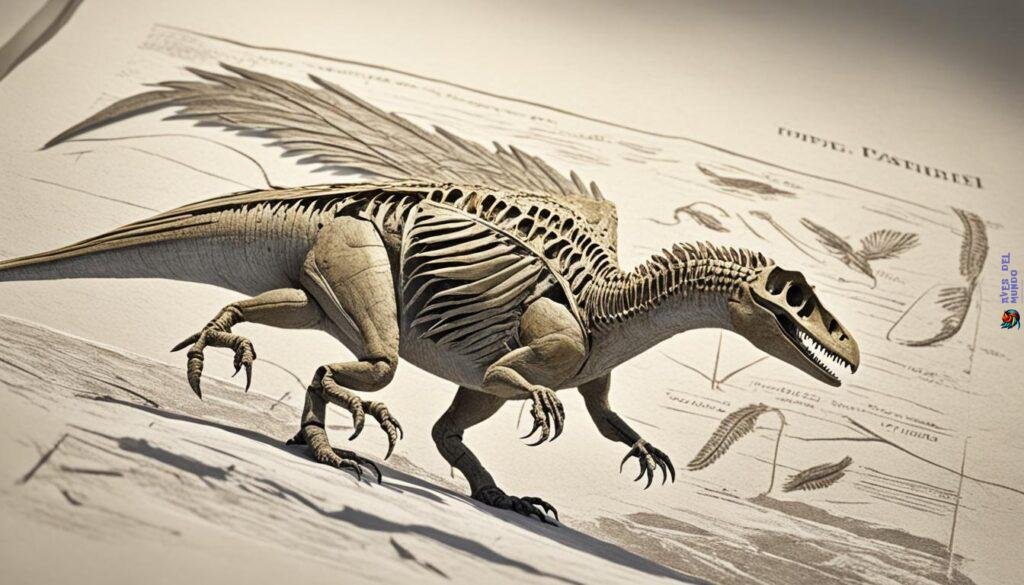
The bird evolution timeline goes way back, painting how today’s birds came from ancient ancestors. By looking into the past, we see that bird-like dinosaurs and feathered dinosaurs played big roles in evolution. Thanks to fossils from China, we’ve got a lot of details on their transformation from dinosaurs to birds.
Some cool discoveries are species like Anchiornis and Yi qi. They amaze us with their unique wings. These findings show different ways of flying existed before the well-known Archaeopteryx. They help us understand how today’s birds got their flying abilities. These ancient birds show the small changes that led to the amazing fliers we see now.
We’re amazed by today’s birds, but we can’t forget about the extinct birds that once lived. Each fossil found is another clue, helping us understand the vast variety of life that existed. As we find more fossils, each one tells a part of life’s big story, a story you join as you explore ancient secrets.
Prehistoric Birds and Their Connection With Dinosaurs
Exploring the story of bird evolution takes us way back. We can’t ignore the huge role of prehistoric birds, like the famous Archaeopteryx. Seen as a crucial bridge between today’s birds and past dinosaurs, the discovery of bird fossils has been thrilling. Grasping the details of these ancient birds lets us appreciate the wonders of evolution.
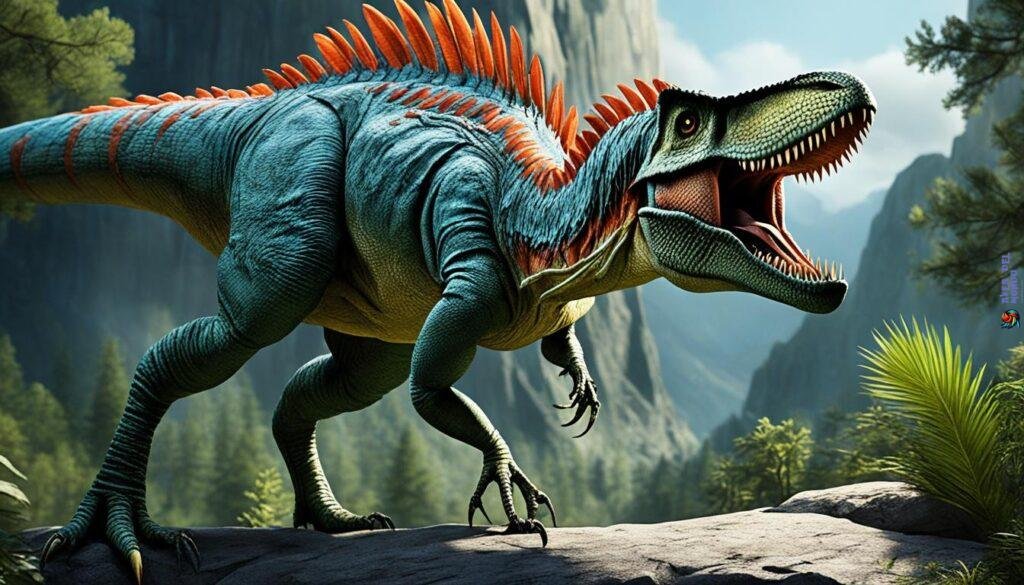
Archaeopteryx: The Iconic Link
When scientists first found Archaeopteryx skeletons in the 1800s, everyone was amazed. This ancient bird had traits of both reptiles and birds, including real feathers. These findings highlighted how birds evolved from dinosaurs, sparking great interest in their history.
Feathered Facts: Beyond Archaeopteryx
Looking past the famous Archaeopteryx, research has shown lots of other prehistoric birds linked to dinosaurs. Some dinosaurs, like the Velociraptor, had feathers not just for flying, but possibly for keeping warm or even attracting mates. This tells us that bird evolution is full of diverse and interesting stories.
| Prehistoric Bird | Features | Link to Dinosaurs |
|---|---|---|
| Archaeopteryx | Feathers, toothed beak, long tail | Transitional fossil with both avian and dinosaur traits |
| Velociraptor | Quill knobs (attachment sites for feathers) | Shown to have feathers, not necessarily for flying |
Thinking about these ancient creatures shows us something special. The birds visiting our backyards are not just eating seeds; they’re showing us a living connection to dinosaurs. By watching today’s birds, we’re connected to a story that started millions of years ago during the time of dinosaurs.
The Paleontology of Plumage: When Dinosaurs Sported Feathers
The ancient world was full of amazing life, including feathered dinosaurs. These creatures link to today’s birds in a fascinating way. They show us how much history is shared between all these beings. Digging into the fossil records, we find that dinosaurs weren’t just scaly giants. Many had feathers as stunning as any modern bird.

New discoveries have changed how we see prehistoric birds. Take the theropods, like Velociraptor, for example. They had quill knobs, proving they had feathers. This moves them from being seen as just reptiles to creatures bird watchers would recognize.
But what do feathers mean for bird evolution? They likely weren’t just for flying. We think they helped with body heat, attracting mates, and more. Watching today’s birds, we can imagine how dinosaurs used their feathers. This adds depth to the story of their survival and change over time.
Feathers aren’t just interesting; they change our view of evolution. Dinosaurs weren’t just a side note. They were crucial to the story that led to the rich diversity of life we see today. This idea gives us more appreciation for the journey from scales to feathers, from ground to sky.
When you see or hear birds today, think of their vast history. They are not just flying around; they are showing us a legacy millions of years old. From ancient times to our current skies, prehistoric birds and their kin show us the beauty and power of life’s journey on Earth.
From Gliding to Flying: How Avian Flight Took Wing
Exploring avian evolution is like solving a complex puzzle. Every fossil discovery helps us understand how dinosaurs evolved into birds. This journey from ancient birds to today’s species is a stunning example of evolution. It encourages us to explore how birds started to fly.
Tree-down vs. Ground-up Theories of Flight Evolution
When learning about bird origins, we find two main ideas. The Tree-down theory suggests that some dinosaurs started flying from trees to the ground. Over time, they fully developed flight. The Ground-up theory believes that dinosaurs on the ground learned to jump and flap. This helped them evolve into flying creatures.
Avian Ancestors: Different Flight Styles for Early Birds
The fossil records are like a diary for paleontologists. They detail how different prehistoric birds adapted to flying. For instance, Microraptor gui might have been great at gliding due to its arms and fingers. At the same time, bird-like dinosaurs like Archaeopteryx could have been the first to master flapping.
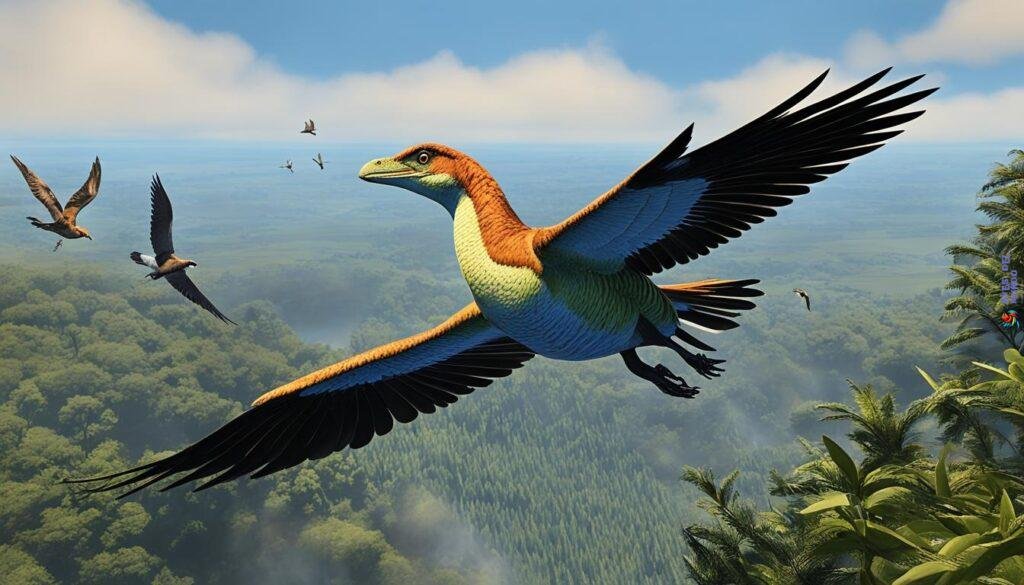
Fossils show us how various species approached flight. Here is a table comparing prehistoric birds. It shows the different flight techniques used by our bird ancestors:
| Species | Flight Approach | Notable Features |
|---|---|---|
| Microraptor gui | Gliding | Four-winged design |
| Archaeopteryx | Flapping flight | Feathered wings akin to modern birds |
| Yi qi | Membrane gliding | Bat-like wing structure |
Looking into avian evolution shows a rich history. From dinosaur descendants to today’s birds, this journey involved many changes. Our bird-like dinosaur ancestors explored various lifestyles and environments.
Birds Bearing Claws: Echoes of Their Dinosaur Past
Today’s birds have amazing traits that link them to dinosaurs. For example, wing claws in some birds connect them directly to bird-like dinosaurs. This shows the complex journey from ancient to modern species.

Unraveling the Mystery of Winged Claws in Bird Species
Looking at birds and their extinct relatives gives us hints about the past. The winged claws in birds such as the Hoatzin and Turaco connect them to ancient Earth. They show how dinosaur descendants were able to adapt and change.
The Hoatzin and Turaco: Vestiges of Dinosaurian Hands
The Hoatzin and Turaco share a special feature with dromaeosaurids: winged claws. This points to a strong evolutionary link with dinosaurs. These species highlight their unique dinosaurian heritage.
| Characteristic | Hoatzin | Turaco |
|---|---|---|
| Winged Claws | Yes, noticeable in juveniles | Yes, less prominent than Hoatzin |
| Ancestral Link | Closer resemblance to theropods | Shared traits with ancient bird-like dinosaurs |
| Evolutionary Significance | Reflects juvenile adaptation for tree-climbing | Indicative of arboreal lifestyle |
| Conservation Status | Least Concern | Species dependent; ranges from Least Concern to Endangered |
The claws of these birds are a symbol of the legacy of extinct birds and dinosaur descendants. They help us understand the long history of life. Exploring the Hoatzin and Turaco lets us see their special traits. It also shows the ongoing journey of avian evolution.
Modern Birds That Mirror Ancient Dinosaurs
When you look at modern birds, like the shy tinamous or the unique kiwis, it’s like looking back in time. These birds show us how dinosaurs slowly turned into the birds we see today. Their features and behaviors give us clues about their ancient ancestors.
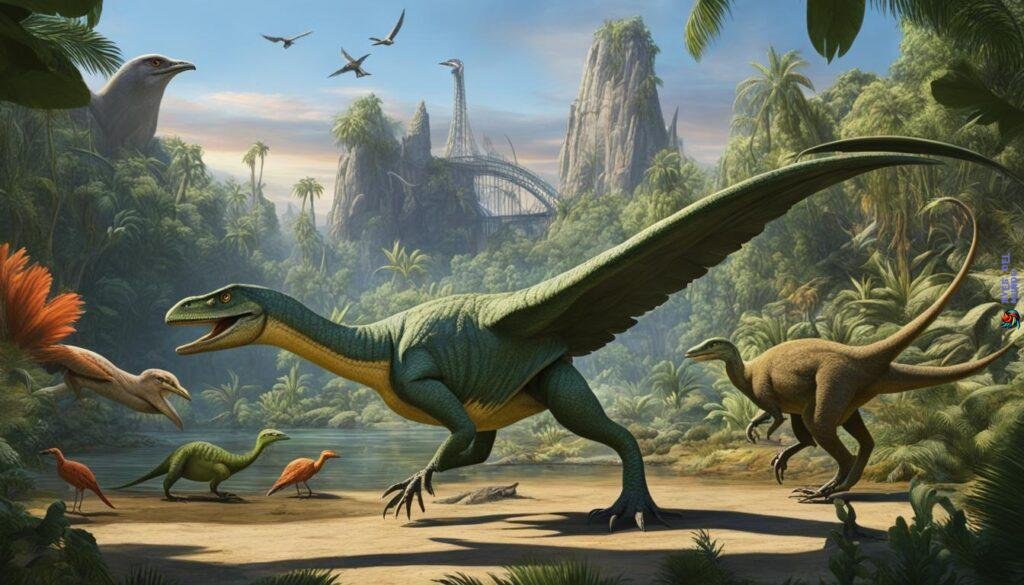
Their ways of living, like how they search for food or where they build their nests, connect them to dinosaurs. Tinamous can fly but often choose to run, similar to how some dinosaurs moved. The kiwis use their strong sense of smell to find food, which might be like what some dinosaurs did.
The Southern Cassowary looks and acts like what we imagine dinosaurs were like. With its big size and unique head, it reminds us of those ancient creatures. They live alone and defend their space, helping us understand more about dinosaurs’ lives. These birds show us the long history of how birds have changed over time.
Watching these birds is like viewing the shadows of dinosaurs lingering in the modern world.
Understanding these links helps us see how life on Earth has changed and grown. The story of how dinosaurs became birds is full of changes and challenges. Today’s birds are a sign of how life can adapt and survive, showing the strength of evolution.
The Cretaceous-Paleogene Extinction Event and Avian Evolution
The Cretaceous-Paleogene extinction event was a major turning point for Earth. It wiped out the dinosaurs, setting the stage for birds to thrive. This event reshaped life on our planet, opening a new chapter in the history of birds and their evolution.
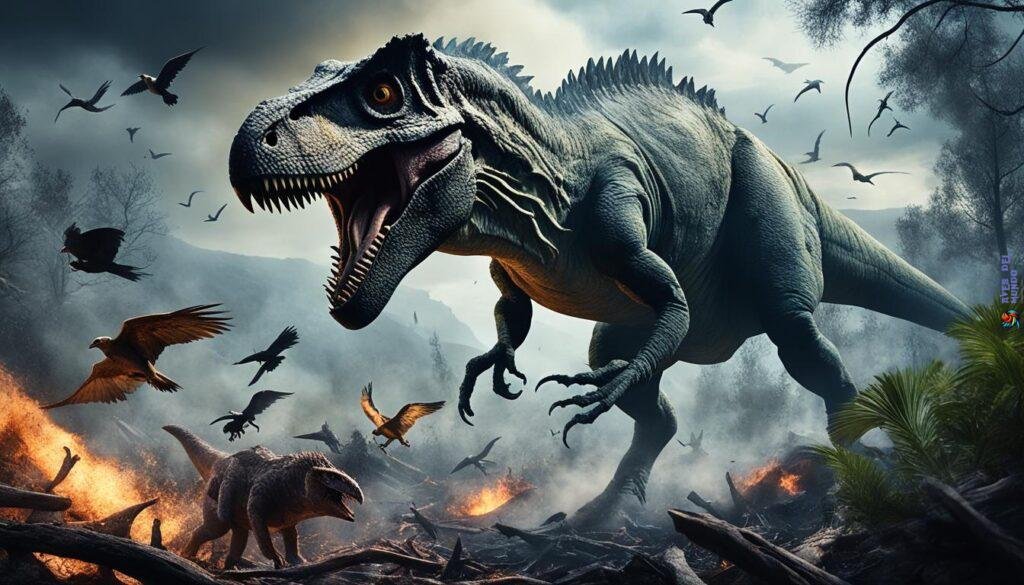
Survival of the Smallest: Bird Lineages Post-Asteroid Impact
The asteroid’s impact favored the small over the mighty. It seems only the tiniest dinosaurs, which evolved into today’s birds, survived. This survival led to a burst in diversity, marking a key phase in the story of extinct and modern birds alike.
End-Cretaceous Mass Extinction: A New Dawn for Birds
The end-Cretaceous was not just about extinction. It was a fresh start for birds. With large dinosaurs gone, early birds quickly adapted, filling new roles. This shift radically changed Earth’s biodiversity, setting the foundation for the vast variety of birds we see today.
Exploring the Audible Footprints: Birdsong as a Vestige of Dinosaur Communication
When you look into bird evolution, you find something special about birdsong. It’s not just a pretty sound. It’s key for birds to live and survive. They use it to mark their territory, find a partner, and show their strength. We think these songs could come from their dinosaur ancestors. Listening to the birds sing in the morning might be like hearing ancient communication.
Birds not only look like their dinosaur ancestors but also act like them in some ways. Their sounds connect them to ancient birds and reptiles. For example, the barn owl can hunt in the dark because of its amazing hearing. This skill might have come from dinosaurs like the Shuvuuia deserti. These sounds show how certain traits can last over time.
The idea that dinosaurs live on through birds is fascinating. It’s not just about bones or fossils. It’s about how birds act and communicate today. By looking at birds, we learn about creatures from millions of years ago. Next time you hear a bird sing, think about its long history. It shows how life can adapt and survive over millions of years.



